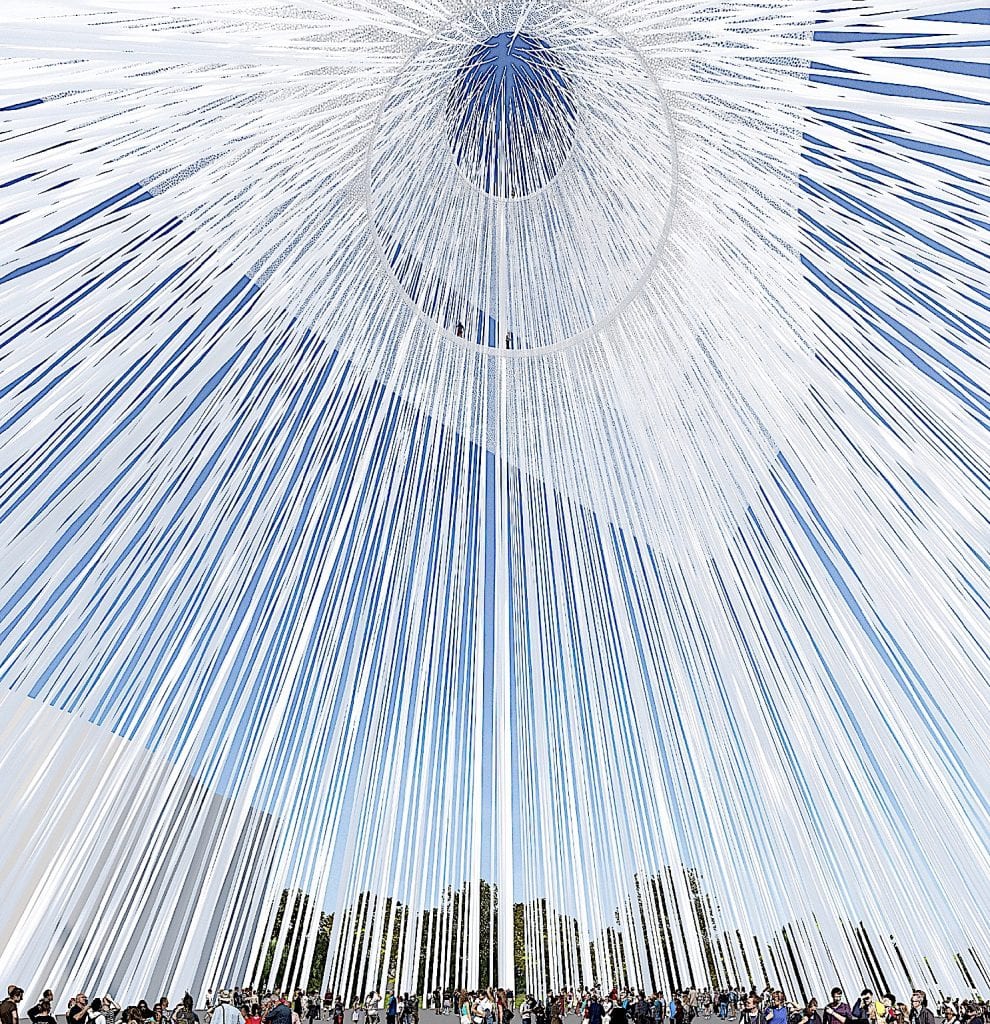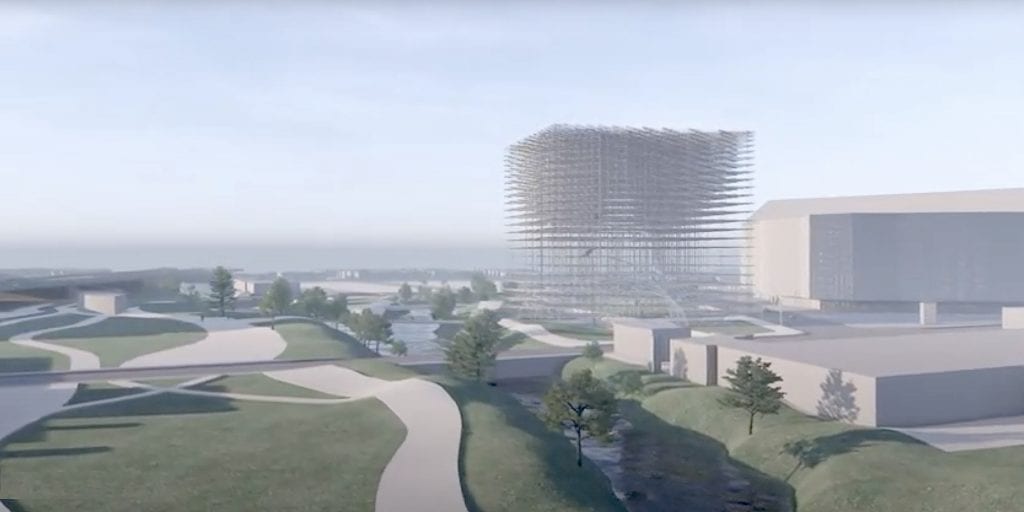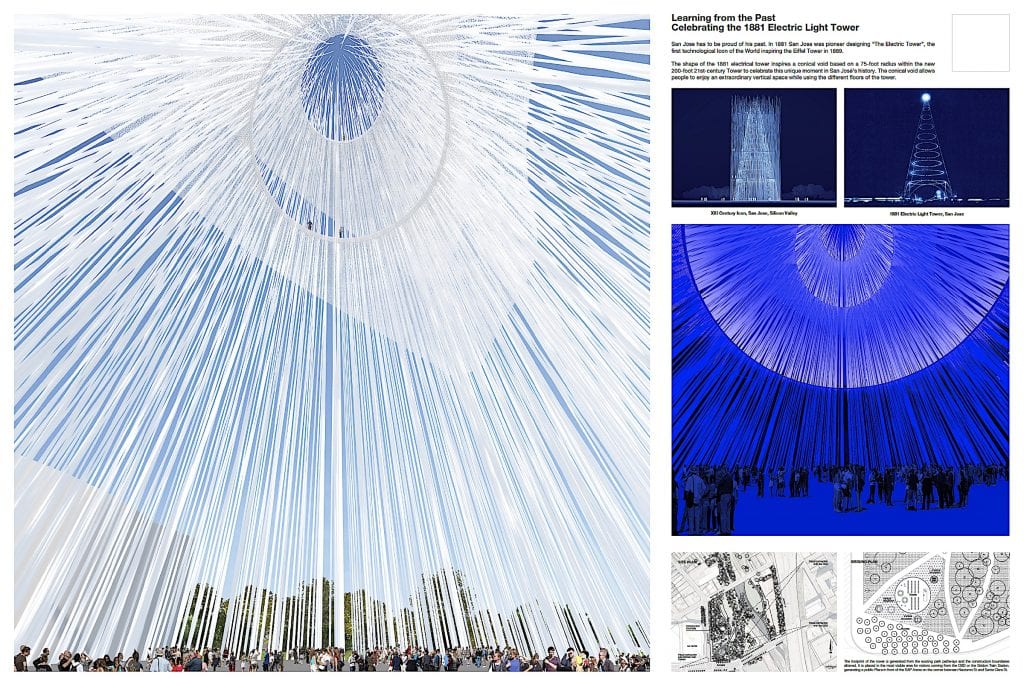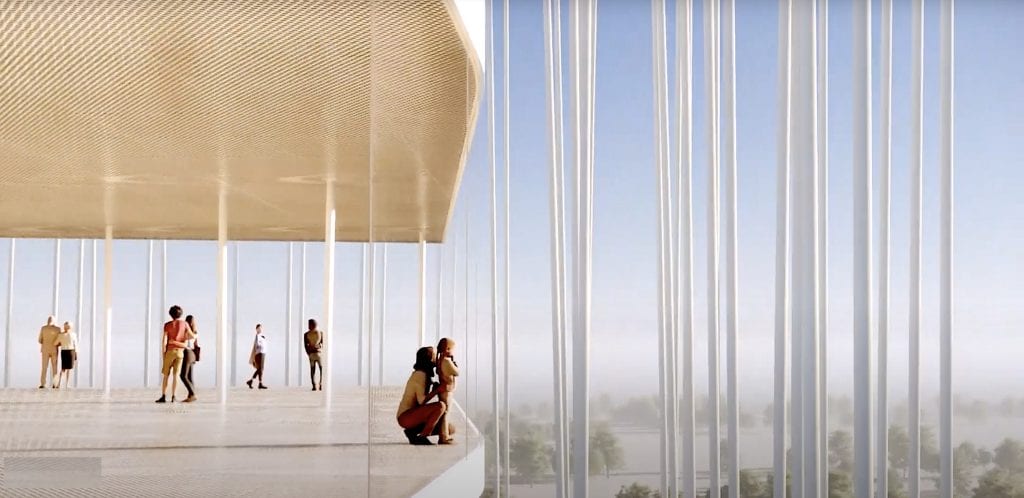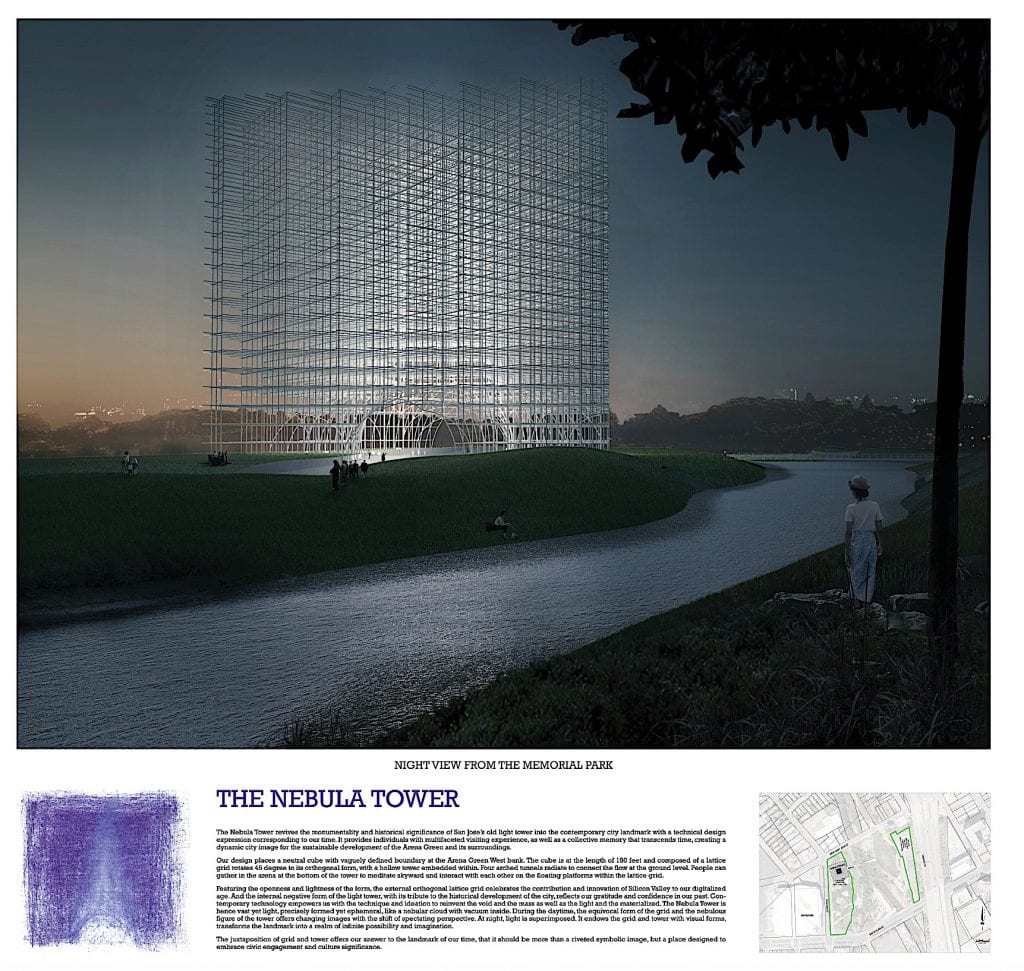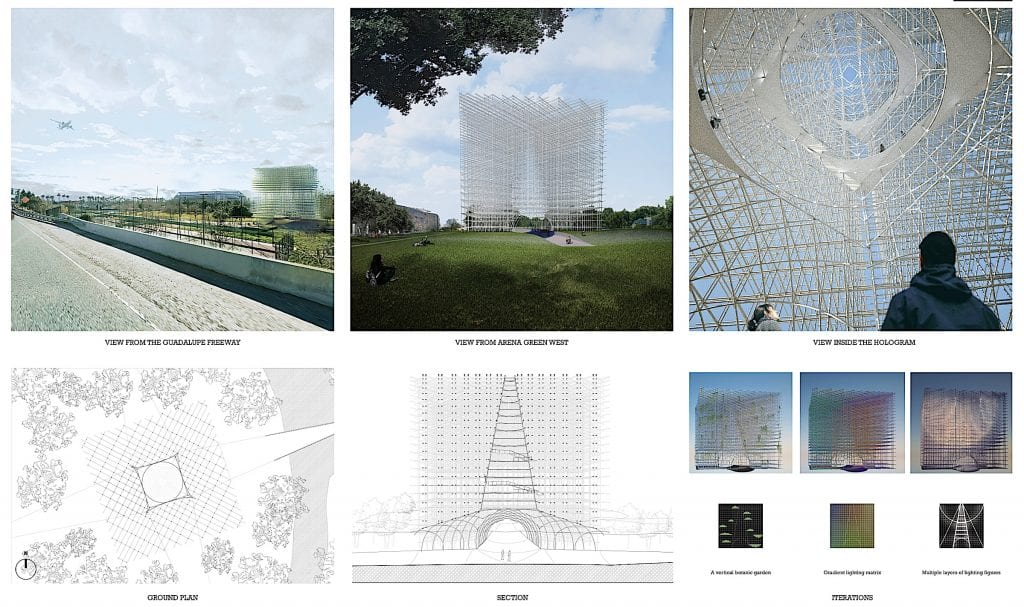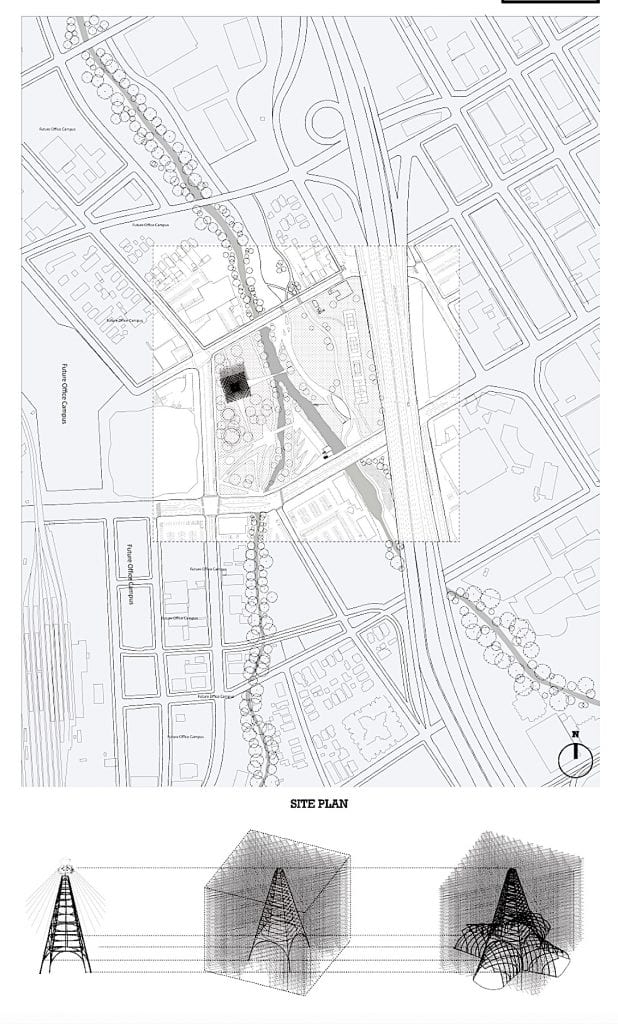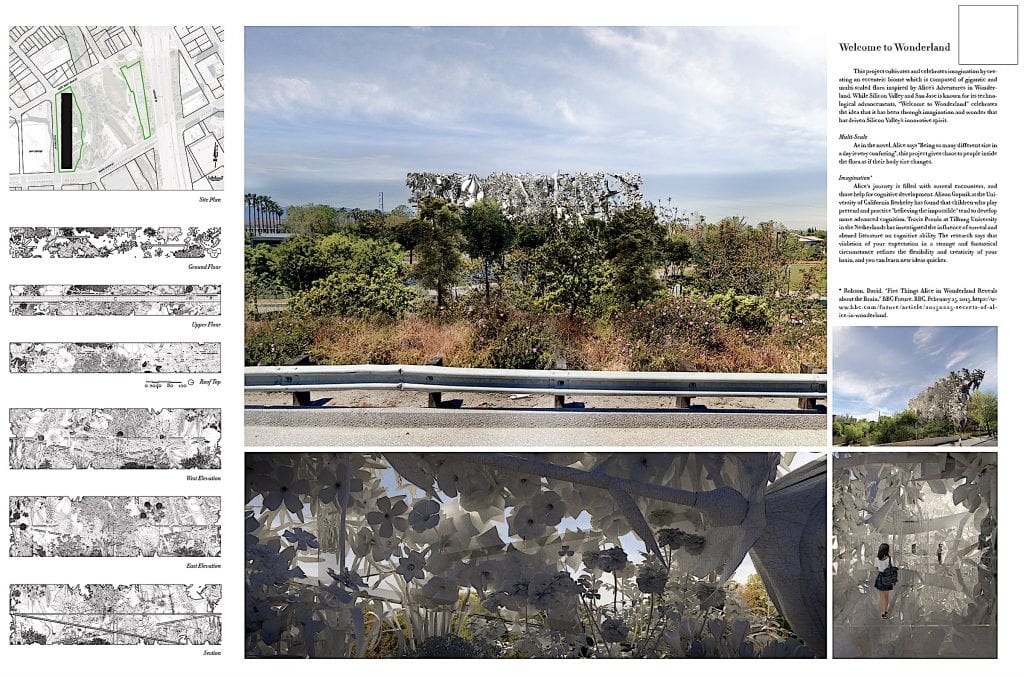The Urban Confluence Silicon Valley Competition
After several stops and starts, a decision to name the winner of the Urban Confluence Design Competition appears to be nearing its conclusion. In 2017, three founders of a local non-profit established The San Jose Light Tower Corporation (SJLTC). The founders of the non-profit, Restauranteur Steve Borkenhagen, construction company executive, Jon Ball and filmmaker Thomas Wohlmut, saw its primary mission in designing and building a new tower as a San Jose and Silicon Valley landmark. This idea was based on the memory of the original San Jose Electric Light Tower (1881-1915), a 22-story structure, located in downtown San Jose and came down as the victim of a gale, never to be rebuilt.
Realizing such a project depends on public support, the SJLTC cleared the first hurdle toward building a public consensus with the unanimous endorsement of the San Jose City Council—for the organization to move forward “with plans to design and construct an artistically-inspired and iconic structure in downtown San Jose.”
To realize such an idea, the project required a site, funding, and a design. Arena Green in Guadalupe River Park was thought to be the ideal location for the project. At the confluence of two rivers and in proximity to downtown San Jose, this was a logical choice. As for the design, they understood that a competition not only would be the natural road to arrive at a suitable design for such an ambitious project, but generate a maximum amount of publicity on the way to seeing the project built. One change occurred along the way: emphasizing the tower as the overriding goal of a solution was jettisoned in favor of a broader design solution. After some input from various parties, it was determined that placing sole emphasis on the tower as a design object was too limiting as a concept and would not generate the interest that a more flexible challenge would. Thus the project took on the name of the site of the two rivers, Urban Confluence Silicon Valley Competition.
The competition was launched in the summer of 2019, and the entries were to be juried after a submission deadline of October 15, 2019. This deadline was ultimately extended, as a surge of comments apparently led to some modifications in the brief. The final deadline was set for July 1, 2020, and the response was the receipt of 963 entries! The program stated that three finalists would be shortlisted and each would receive $150,000 to finetune their presentations before a final decision was reached.
When the jury of 14 members convened to adjudicate the entries, the initial screening in the first round resulted in the number being reduced to 47 designs. Following that, three entries in the next round were chosen as finalists and given the task of finetuning their designs in more detail for a final decision.
The three finalists were:
• Fer Jerez and Belen P. de Juan, SMAR Architecture Studio, Perth, Australia
• Rish_Ryusuke Saito, RNT Architects, San Diego, CA
• Qinrong Lui / Ruize Li, Harvard GSD / Singapore
The winner is to be determined in early 2021. The very existence of many high-tech companies in Silicon Valley in the San Jose area eventually could bode well for the ultimate realization of the competition winner.
Urban Confluence Silicon Valley Finalists
Breeze of Innovation
SMAR Architecture Studio
Fernando Jerez / Belen P. de Juan (co-designers)
Perth, Australia
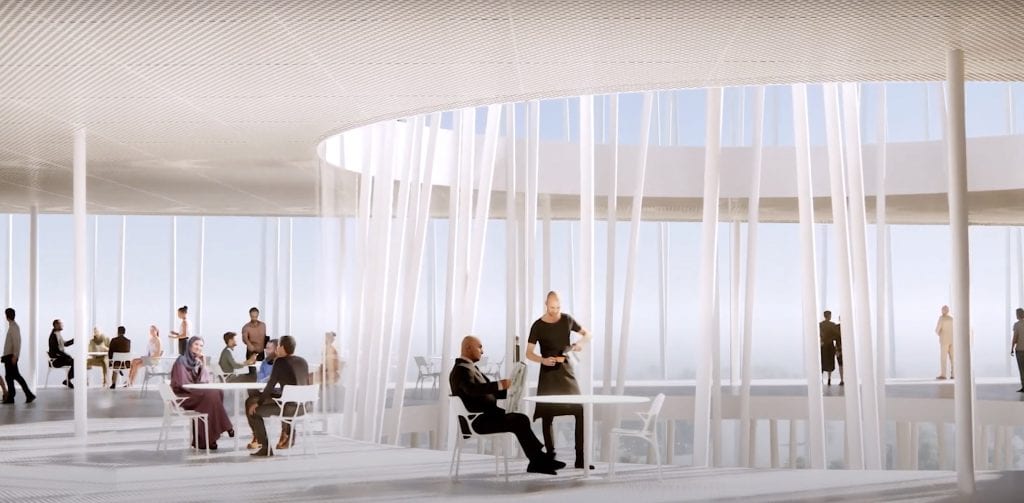
Above images ©SMAR Architecture
The Nebula Tower
Qinrong Lui / Ruize Li (co-designers)
Harvard GSD, Cambridge, MA / Singapore
Above images ©Qinrong Lui / Ruize Li
Welcome to Wonderland
Rish_Ryusuke Saito
RNT Architects, San Diego, CA
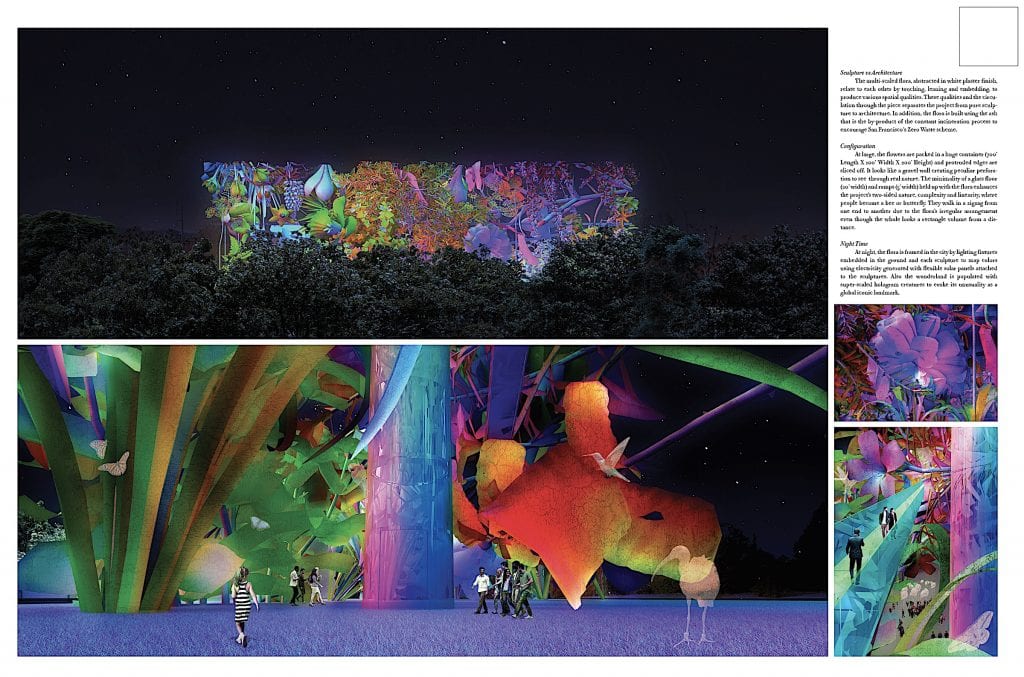
Above images ©Rish_Ryrsuke Saito
To review entries from the second round (47) or all of the entries (963), go the competition website:
https://www.urbanconfluencesiliconvalley.org/ccp47



























